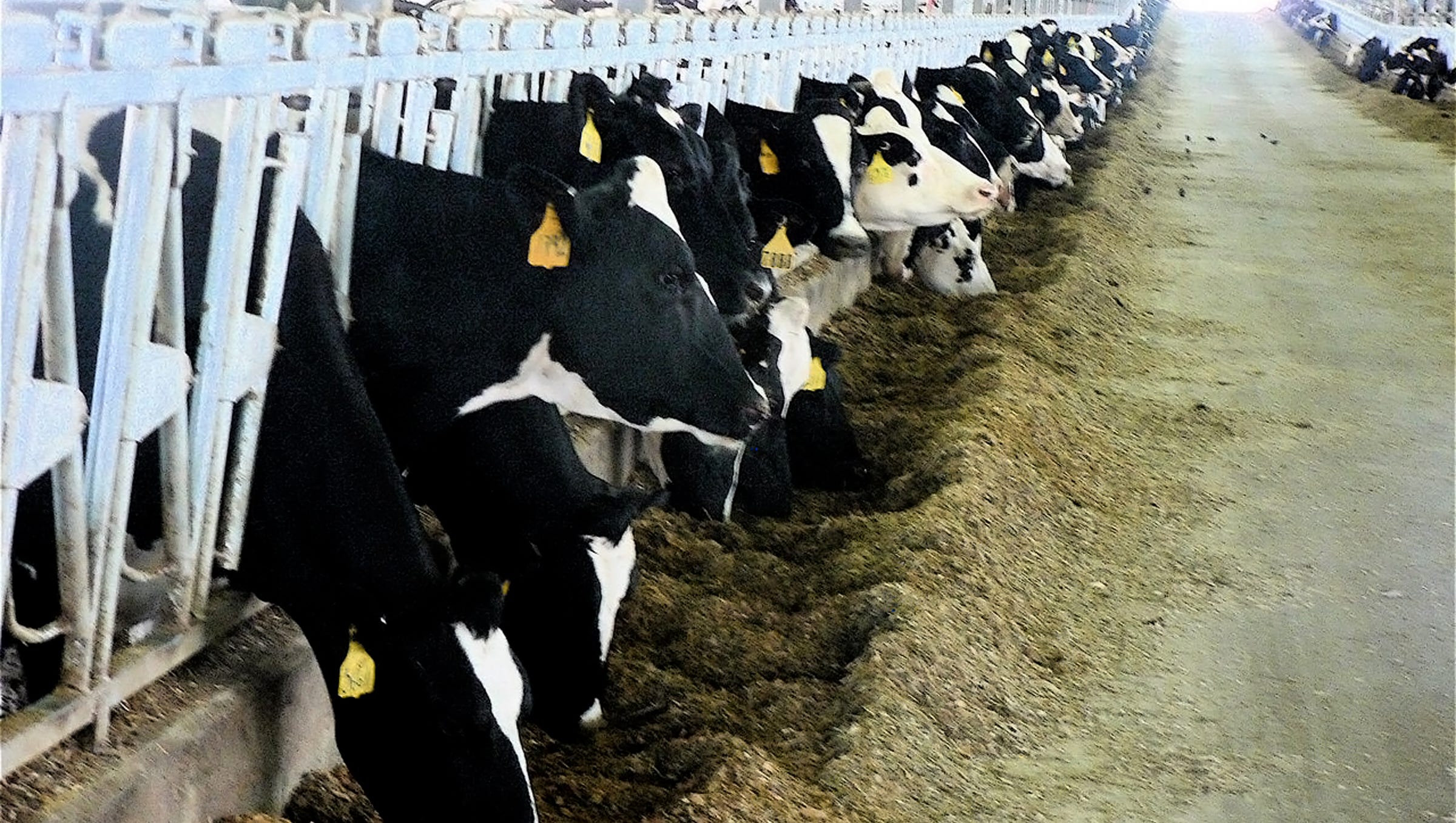Forage quality guides feeding practices

BRILLION – For the best outcomes, match the quality of cover crop forages with the groups of dairy cattle that they are fed to, University of Wisconsin dairy management specialist Matt Akins reminded attendees at the Calumet County Forage Council's 2019 field day.
Akins, who is affiliated with the agricultural research station near Marshfield, cited data from 2018 on cooperating dairy farms in Brown and Dane counties for his recommendations. Following the handful of farms in the early data sets, he expects input from at least 10 farms in 2019 thanks to the cooperation of county Extension Service agents.
The 2018 data was obtained from five farms in the two counties for cereal rye and from three farms for triticale. While the feed quality traits and milk production potential per ton of dry matter were well within acceptable standards, Akins commented that the dry matter averages of 29 percent for the cereal rye and 28.3 percent for triticale were “a bit high” and indicated a need for some wilting before ensiling.
Consider triticale
In addition to the popularity of cereal rye as a winter cover crop and a harvest for forage in the spring, Akin likes triticale as another choice. Its advantage is the longer window for holding high feed quality – particularly in years when weather interferes with the intended harvest schedule, he noted.
Of the two, Akins admits that cereal rye “is easier to establish” and is more likely to survive the winter in good condition but it also has a narrower window for harvest at top quality as a forage for lactating dairy cows.
For lactating dairy cows, use cereal rye and triticale forage as a replacement for haylage, not for corn silage, up to as much as one-third of the forage dry matter in the ration, Akins advised. “They are an excellent source of digestible fiber when harvested at their boot stage.”

Research findings
The potential for triticale, especially in central and northern Wisconsin, has been documented by researcher Wayne Coblentz at the Marshfield station, Akins reported. The yield data from 2016 and 2017 at six different growth stages also showed how great the annual variations can be, he pointed out.
In 2016, per acre yield for the triticale at boot stage for a May 25 harvest was a very acceptable 1.5 dry matter tons and above 5 tons at dough stage on July 1, Akins observed. But in 2017, the per acre yield had reached only 1 ton at an early boot stage on May 29 and only 2 tons at dough stage on June 30, he added.
Both years showed a rapid drop in protein from over 20 percent in the vegetative and elongation stages, to around 15 percent at boot stage, an accompanying rise in neutral detergent fiber from 40 to above 60 percent, and a related drop in total digestive nutrients from over 70 percent to the low 60s at flowering before a slight rise due to the presence of grain starch at the dough stage, Akins explained.
Feeding choices
What those changes in feed quality mean is that forage harvested through boot stage is suited for lactating cows and pre-breed heifers while forages from later maturity staged should be fed to pregnant heifers, Akins stated. Be cautious on feeding any of the crop cover forages to dry cows because of the possibility of high potassium content, he advised.

For the pre-bred heifers, Akins suggested having the high quality boot stage forages provide up to 50 percent of the diet. For the bred heifers, the lower quality (headed to dough stage) forage could make up nearly all of the diet if the fiber and protein content is appropriate, he indicated.
As an example for pregnant heifers weighing 1,200 pounds at 18 months, Akins calculated a daily feeding cost of $1.25 on a diet of 19.2 pounds of triticale, 4.7 pounds of corn silage, and .12 pound of urea (to boost rumen activity) compared to about $1.50 if alfalfa haylage were fed as a major portion of the forage. He noted that, at about 50 percent, the fiber digestion for alfalfa haylage, is well below the 60s that is typical for cereal rye and triticale forages.
Late planted corn
With the prevalence of late planted corn around the state this year and the need for extra dairy ration forages on many farms, Akins reviewed the previous research findings by Extension Service corn agronomist Joe Lauer on the best timetable for harvesting of immature corn for maintaining milk production.
Those findings are that corn harvested at silking rates at about 90 percent of the top potential of corn silage for milk production while that at R3 maturity falls to between 75 and 80 percent, Akins pointed out. “The silk stage has very digestive fiber.”
A drawback with the harvest of immature corn for silage is the high moisture content, meaning that the storage facility should be matched with the moisture, for which the ideals are 30 percent dry matter for bunkers and 35 percent for silage bags and upright silos, Akins stated. With corn that freezes, wait a week or two to harvest because of how much moisture the stalks retain even though the leaves are dry, he concluded.